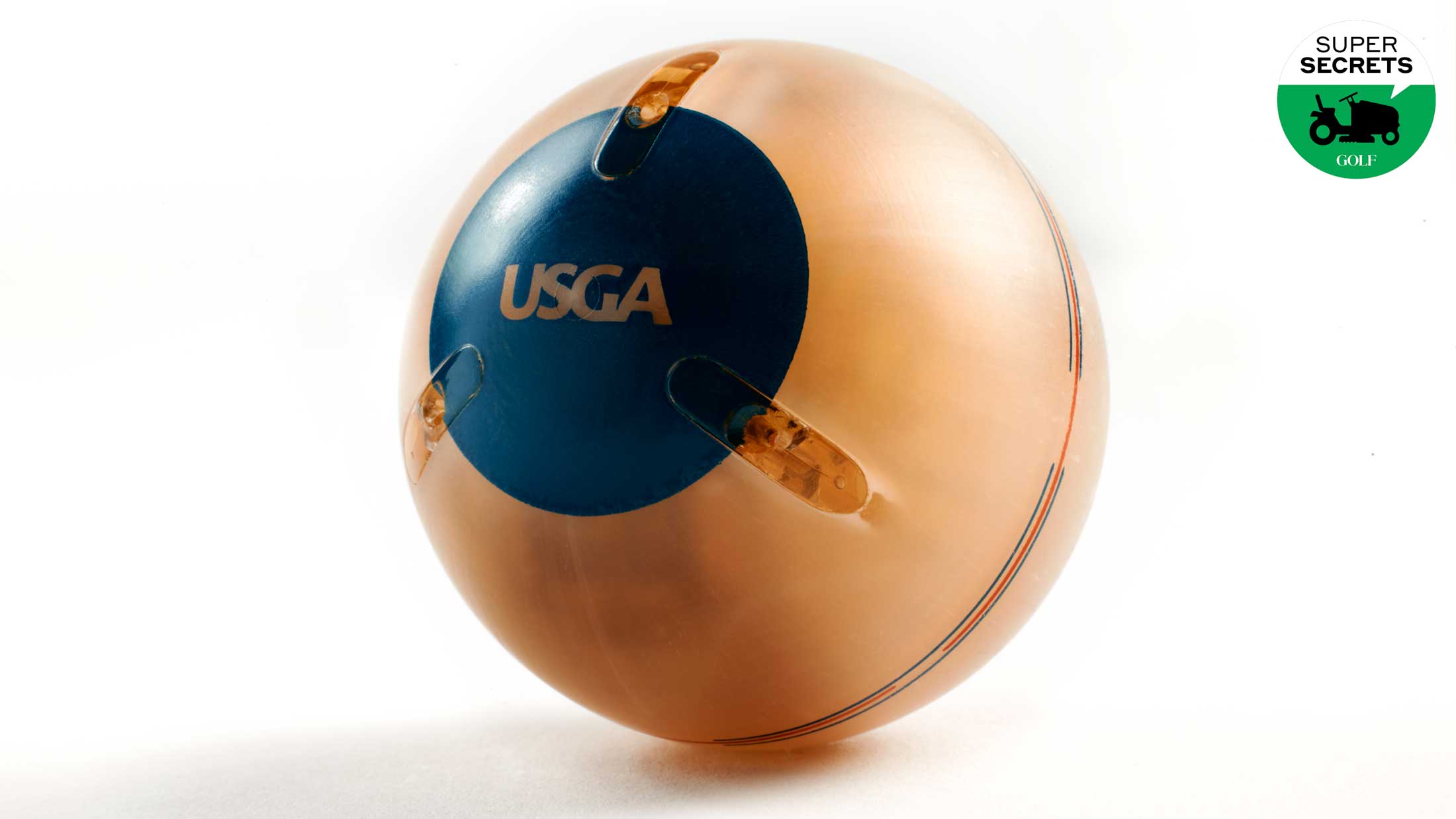Wouldn’t it be great if the putting green at your local course told you when it it’s getting too dry, when it should be mowed or when play should begin again after aeration?
That’s all possible now, thanks to the USGA’s latest technological tool: the GS3 — an innovative, golf-ball shaped device that is capable of capturing more than 15,000 data points via internal sensors.
So how exactly does it work?
It starts with a Stimpmeter, the yard-stick-like device that course operators roll a ball down to measure green speed. Users will also deliver the GS3 to the green via a Stimpmeter — the device is the same size and weight as a golf ball — but will collect far more information than what a standard ball delivers. The GS3’s sensors gather data on a green’s firmness, smoothness and trueness in addition to its speed.
Once a GS3 has been activated, it can be used in conjunction with the USGA’s Deacon app, which was first launched in 2021. The Deacon is a digital tool that was created to help courses track metrics like pace-of-play and weather, prioritize resources and assist in data-based decision-making to improve golfers’ overall experiences.
While on the green, users can select their exact position in the Deacon app, then roll the GS3 on the Stimpmeter six times — three times each in opposite directions. Data is automatically uploaded from the GS3 to the app.
“We are excited to provide a tool that enables the industry to objectively quantify putting green metrics, besides just green speed,” Matt Pringle, managing director of the USGA Green Section, said in a press release. “GS3 can clarify the impact of different maintenance practices, provide benchmarks and communicate to stakeholders how the course is performing.”
Bel-Air Country Club, host of this year’s U.S. Women’s Amateur Championship, has already put the GS3 to work.
“We have been utilizing GS3 for over two months, and I love being able to compile all of the information it provides in one spot,” Justin DePippo, Bel-Air’s director of golf course and grounds, said in the release. “We are using the numbers to chart our green conditions and create benchmarks, which allows me to make course care decisions based on the data. GS3 and DEACON will improve the way we maintain our greens and we are looking forward to seeing positive results because of it.”
The GS3 was pilot-tested over the course of the 2022 USGA championship season, and the governing body says it will use the GS3 at every championship in 2023 and beyond.
